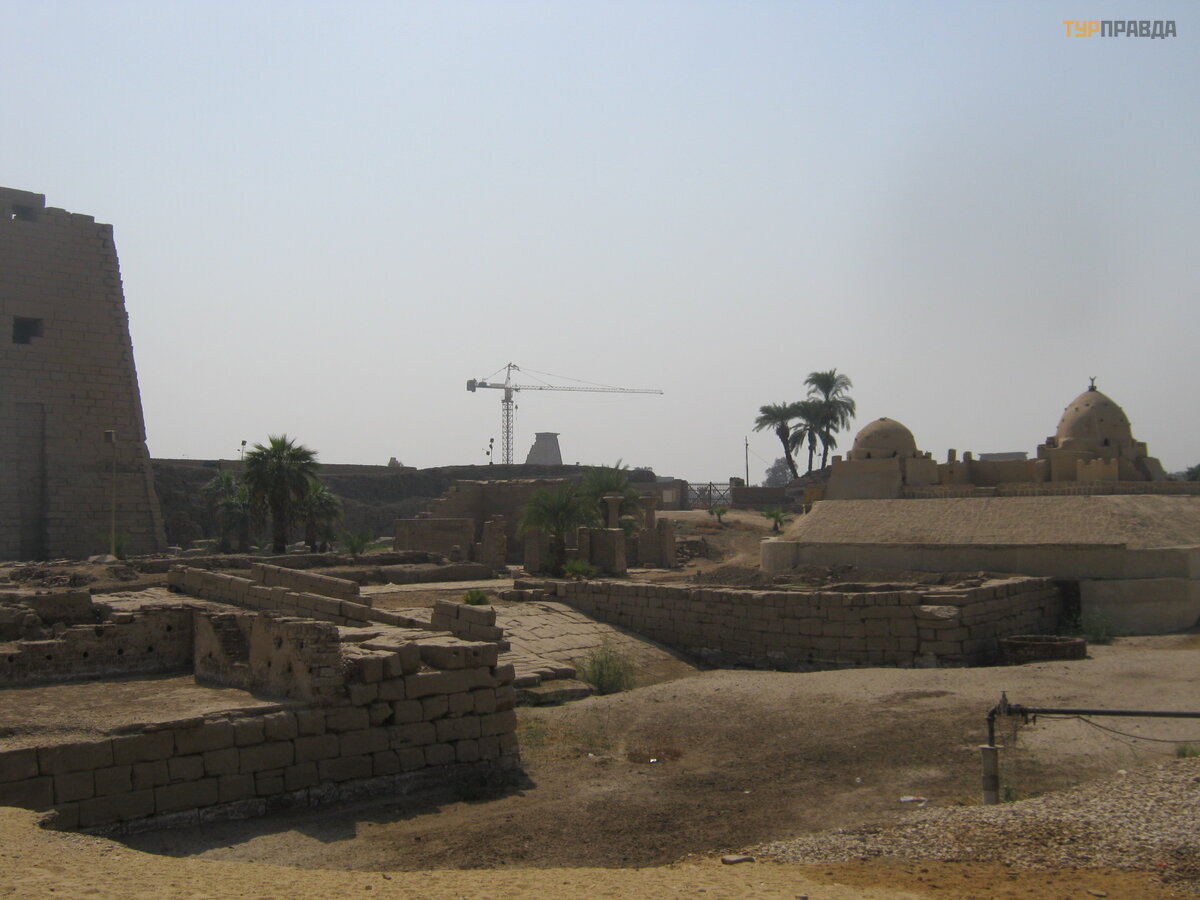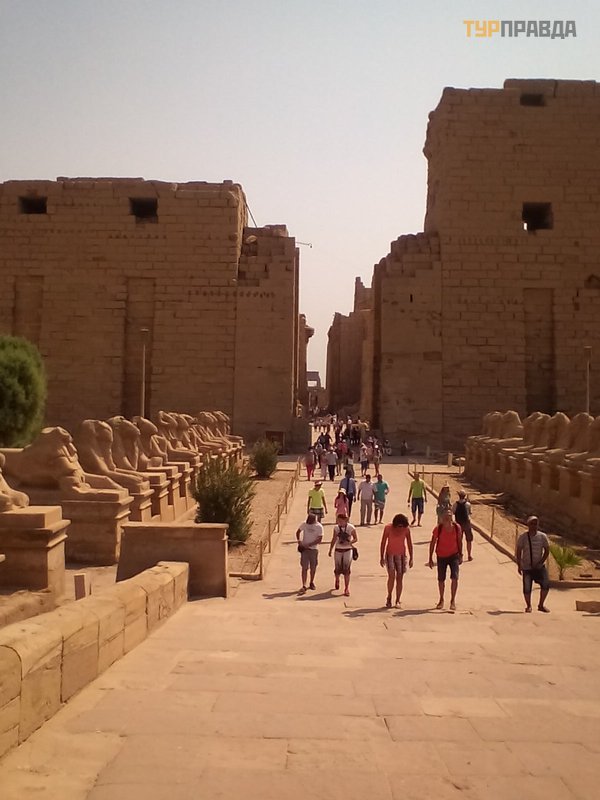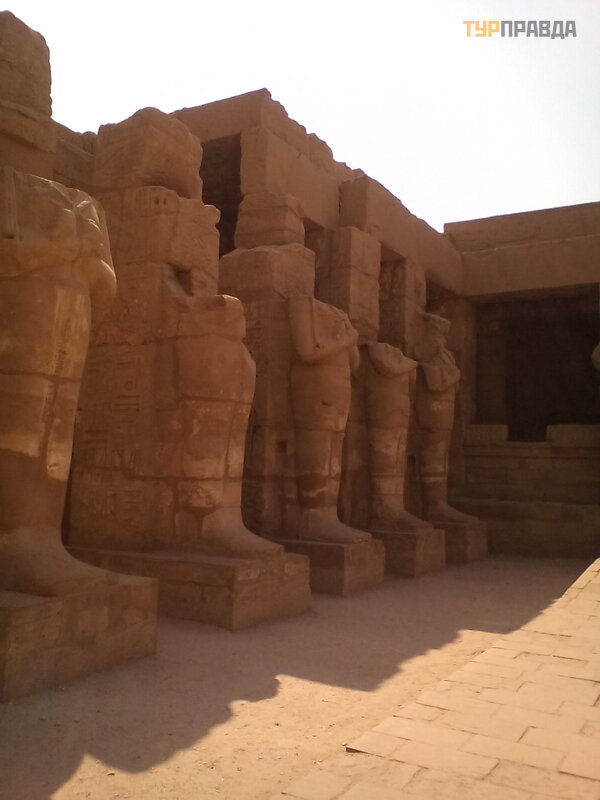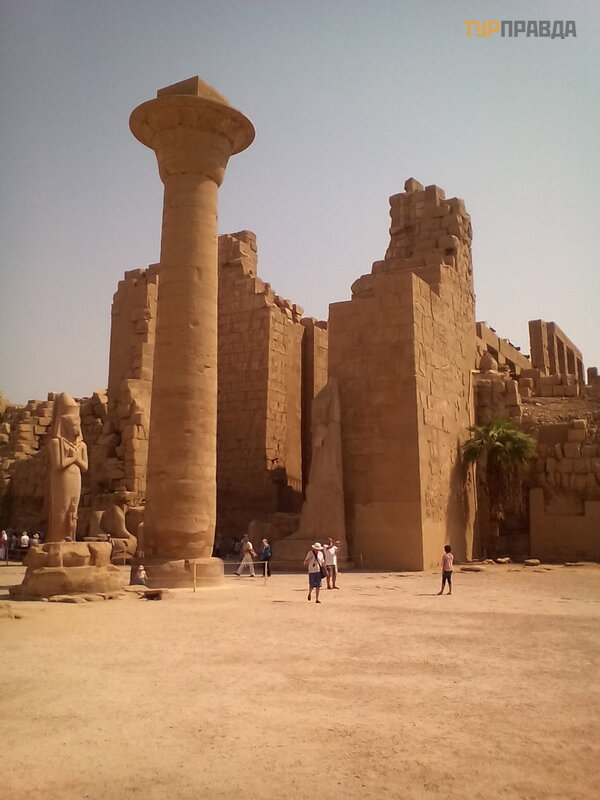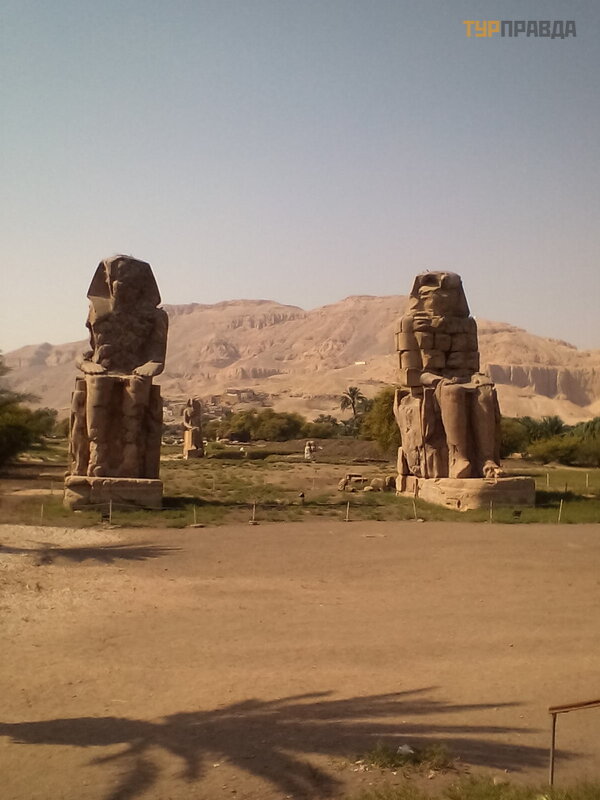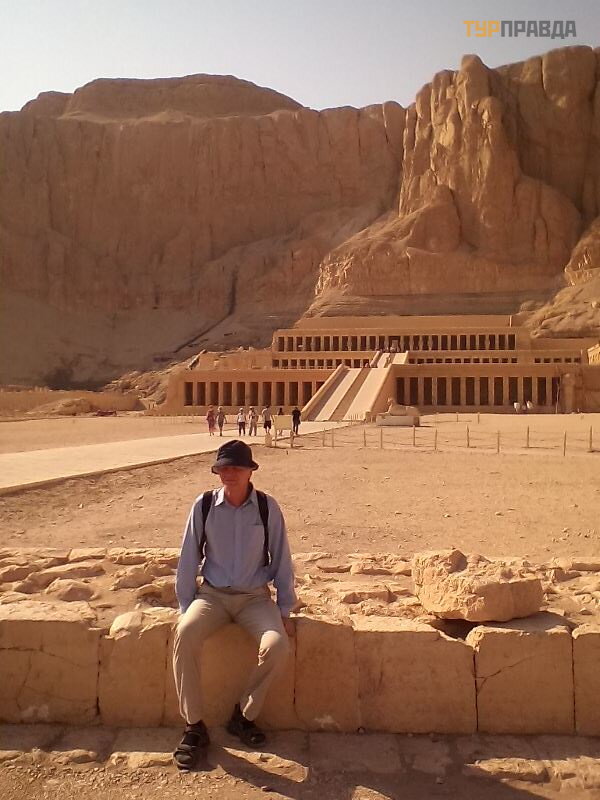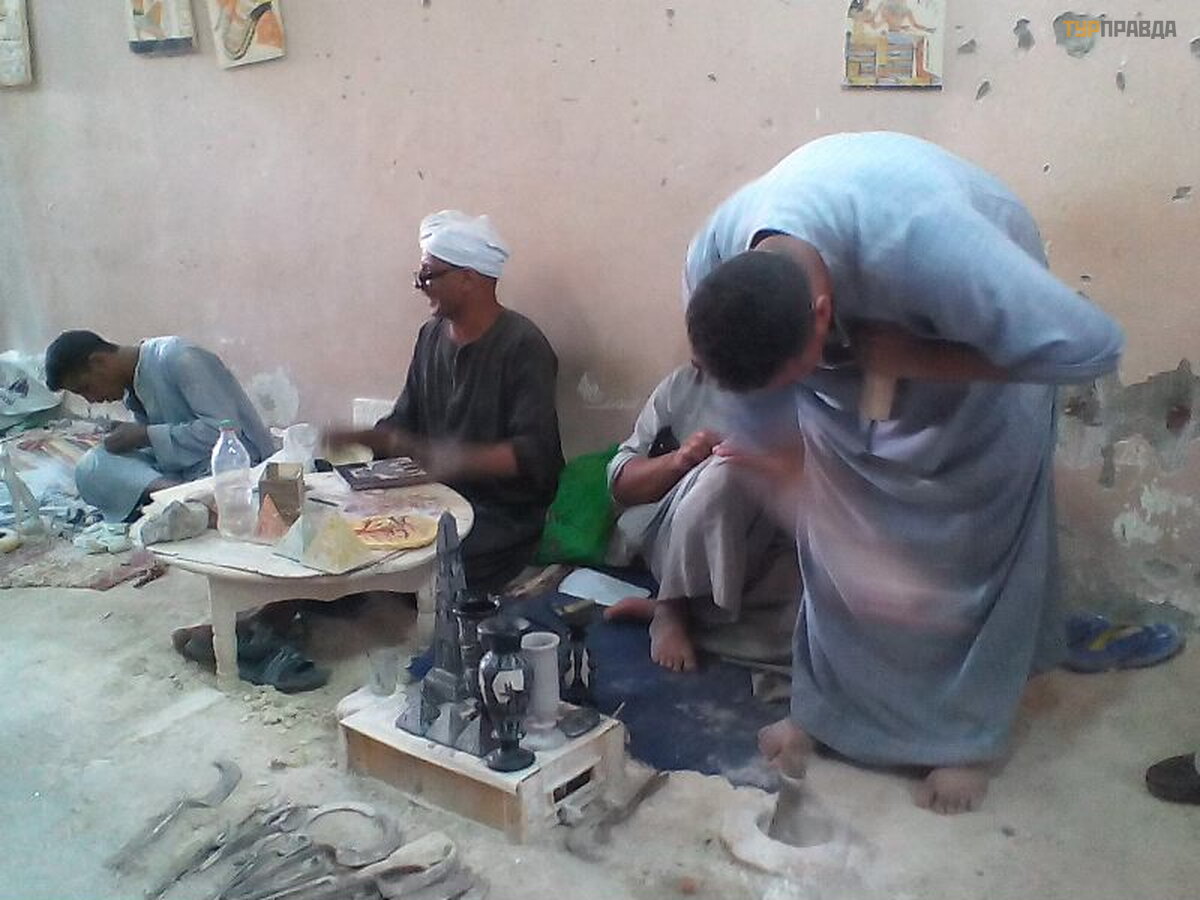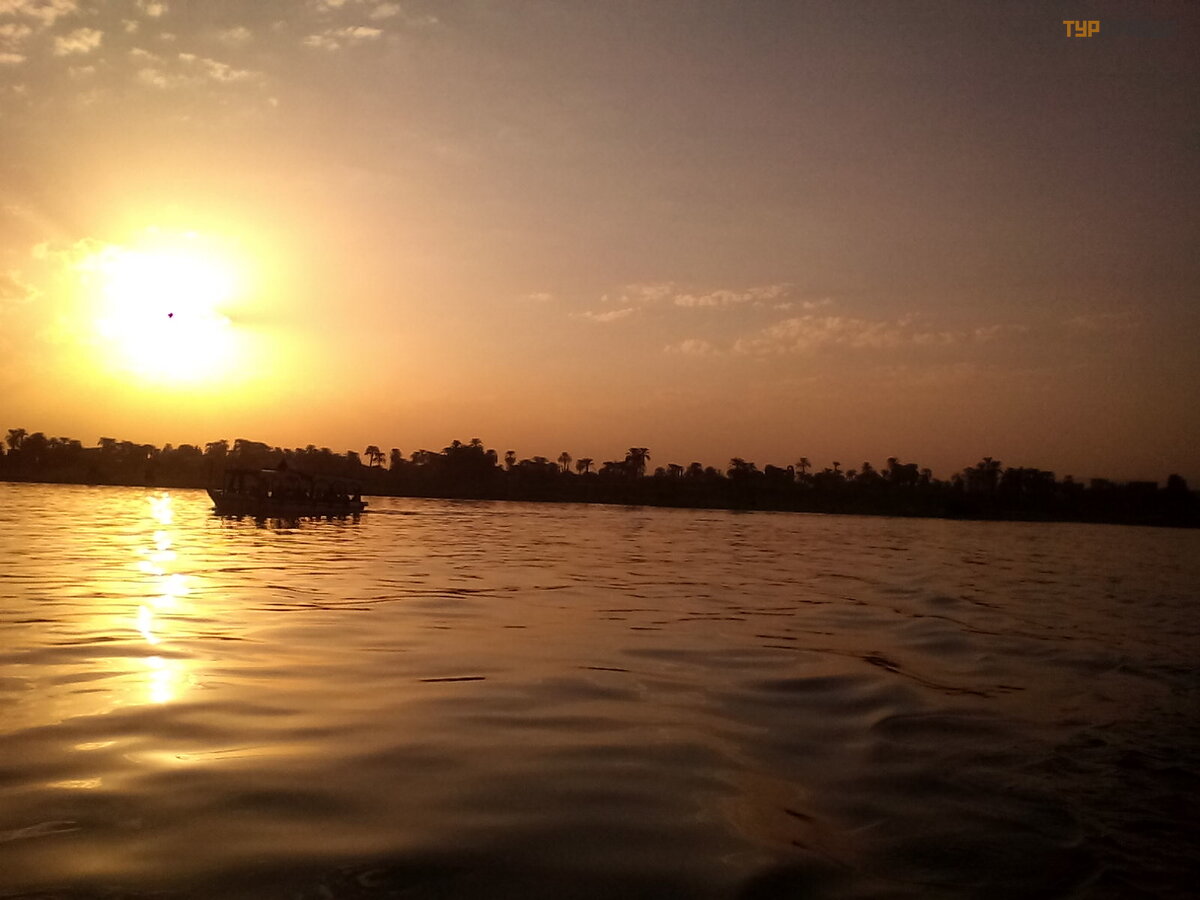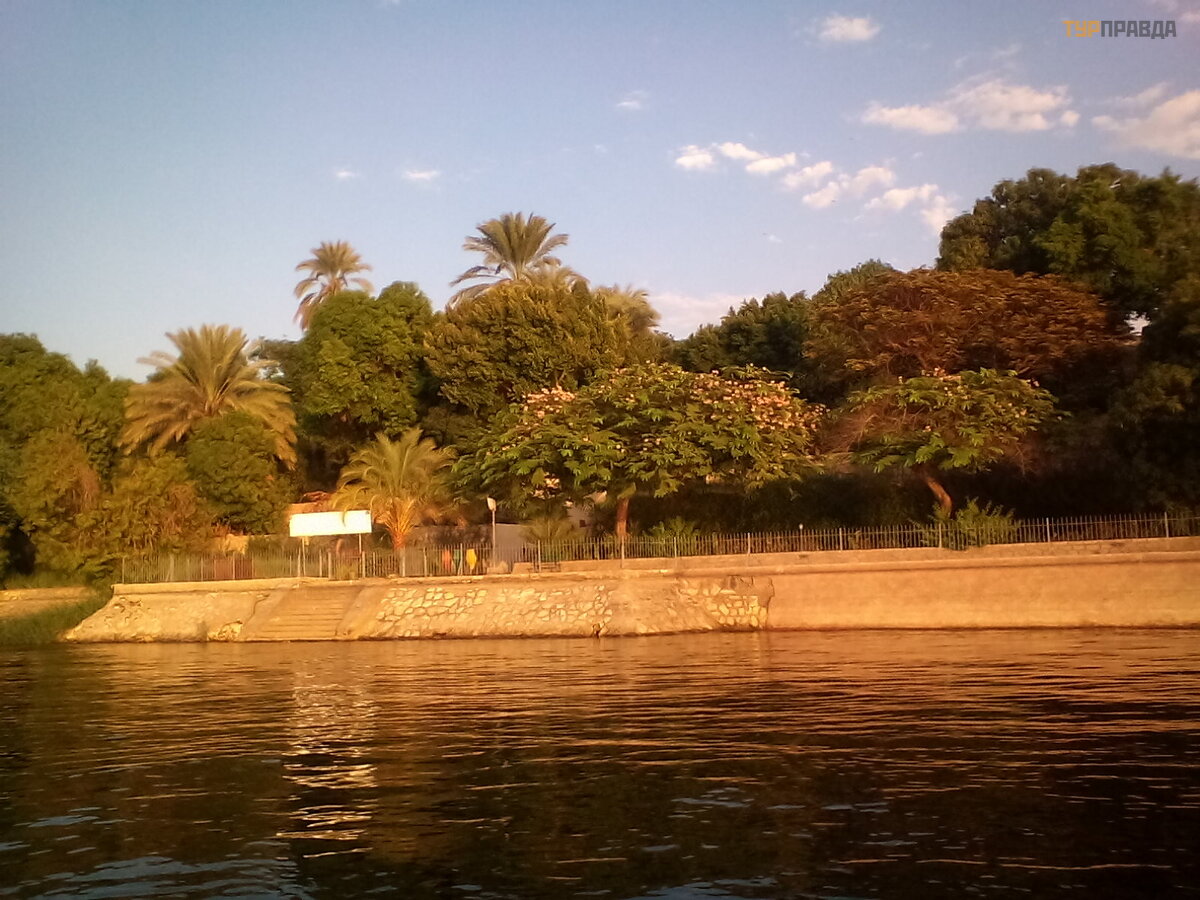I have been wanting to visit Egypt for a long time. Part 2
Part 2. Excursion to Luxor.
First on our list was an excursion to Luxor. Drive far. Wake up at 5 am, check out at 5.30 am. The tour operator has good buses, 4 drivers per shift. But I didn't manage to take a nap: the driving style is such that the bus slows down and jerks before any slightest turn.
Around 8 am stop for breakfast near the cafe.
There is an opportunity to chew your lunches, you can order coffee, tea, juice, but the prices are "horse" - $ 3 per cup. Paid toilet. But what really pleased in Egypt was (forgive me for the intimate details) the opportunity to use the toilet on the bus while it was moving (a moment that keeps many from long-distance bus travel). And interestingly, there is no smell.
After bus tours in Europe, where you can only dream of a toilet from stop to stop with a gap of 3-4 hours, this was a pleasant surprise.
At about 10 am we arrived in Luxor.
Luxor - "the city of the living" - is located on the right bank of the Nile, on the site of the city of Thebes, the former capital of ancient Egypt.
Our program for visiting Luxor includes the alley of sphinxes and part of the Temple of Karnak.
But this part is also amazing and makes it possible to imagine all the greatness of the ancient civilization.
Tourists wander with admiration among the powerful columns of the Great Temple of Amun, which are almost two thousand years old.
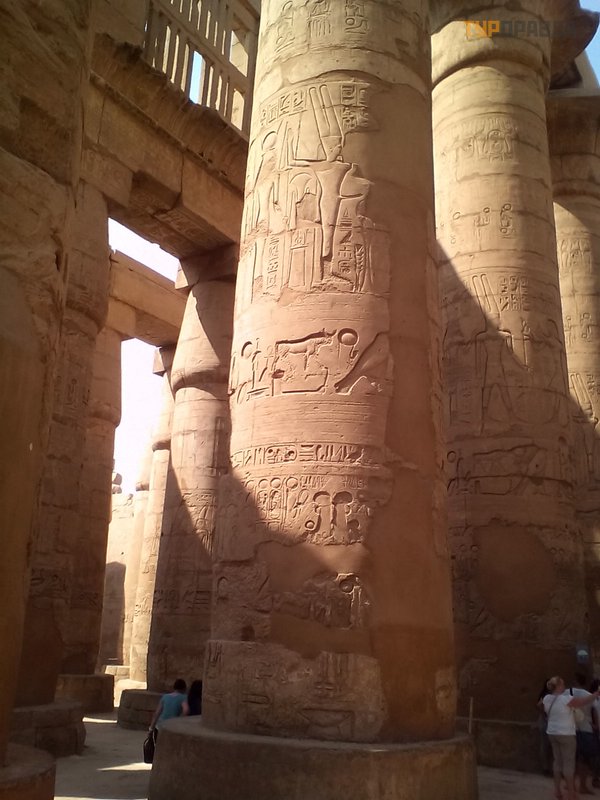 Columns of the Great Temple of Amon
Columns of the Great Temple of Amon
Pharaoh Thutmose III created a Sacred Lake next to the temple, in which the priests bathed before the rituals. According to legend, the Sacred Lake can turn sand into gold.
Amenhotep III installed a granite statue of a scarab beetle on the shore of the Sacred Lake.
The scarab was considered a sacred animal, since, according to the Egyptians, it was self-regenerating, in which it was similar to the gods. The scarab was a symbol of resurrection and immortality, and was considered the most significant ancient Egyptian amulet.
A group of Chinese circles around the monument. From the outside it looks strange and funny.
But the legend says that, having made a wish, you need to go around the monument to the scarab in a circle counterclockwise, and touch it with your hand. Then your wish will surely come true.
A girl who wants to get married needs to go around three times. A couple who wants a child - nine times.
All other desires - 7 times.
Our group is next. Everyone has a lot of desires, so we also obediently turn circles. What if ancient Egyptian magic works =)
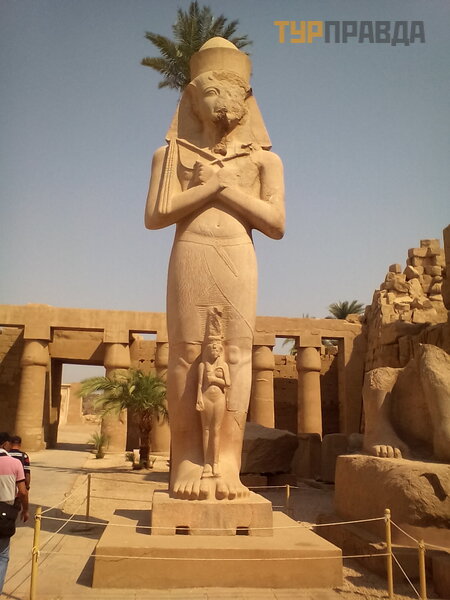
In the temple, near each column, locals lie in wait with an unobtrusive desire to tell you where it is better to take a picture, what corner to see.
For this, of course, they want money. It is difficult to ignore them, but there is not enough money for everyone.
Another sightseeing object along the way is the singing colossi of Memnon. The name “Colossi of Memnon” is Greek and has nothing to do with the ancient Egyptians. The colossi became famous in the ancient world after the earthquake of 27 BC, when the northern statue was badly damaged - the entire upper part fell off. And after that, the lower part that remained in place began to make sounds. Since the sound was heard at dawn, the Greeks called the statues "Colossi of Memnon". Memnon - the king of the Ethiopians, who came with an army to help defend Troy. Memnon was the son of Eos, the goddess of dawn. According to Greek legend, the morning dew is Eos's tears for her dead son. And the sounds from the Colossi in the morning the Greeks considered the cry of the goddess Eos for her dead son.
The colossi of Memnon stood at the entrance to the mortuary temple of Amenhotep III.
The colossi did not make a sound every day, and hearing their song was considered a good sign, and not hearing it was a bad omen. Emperor Septimius Severus did not hear the sounds and decided to do something good for the Colossi. He ordered the restoration of the northern statue. The upper part of the northern Colossus was reassembled from five tiers of limestone blocks. After this restoration, the Colossi of Memnon fell silent forever.
Local merchants of all sorts of nonsense immediately run up to the approaching sightseeing buses, but our guards with machine guns push them away from the group.
It's time for dinner and we are taken to a cafe. And then we move to the left bank of the Nile in the "City of the Dead", which included the "Valley of the Kings", "Valley of the Queens" and the temple of Queen Hatshepsut.
October 20, and the air temperature in the "Valley of the Kings" is 46 degrees!
The Valley of the Kings is a necropolis carved into the rock, where all the pharaohs were buried for 500 years. Over 60 tombs are located in the rocks, five are available for inspection. Just enough to make an impression.
And near each tomb open to the public, and inside it, locals sit. They look at our tourist only through the prism of money. And they are all so helpful! Without them, we would be lost in the tombs! They offer to show secret cameras, invite and pretend that they are offended that they are not trusted.
We go into the tomb of the pharaoh. After a 46-degree heat, a pleasant coolness and silence reign here. A long corridor goes down rather steeply, to a depth of about 100 meters.
Below is a burial chamber.
The walls of the corridor are painted with hieroglyphs and frescoes depicting scenes from the myths of Ancient Egypt and designed to ease the path to eternal life for the deceased pharaoh.
It seems that the colors are quite fresh, the drawings look so bright.
Gold jewelry and rich utensils were left at the burial place so that the pharaoh could feel the usual luxury in the other world. These treasures became the reason for the looting of the main part of the burials.
The pharaohs tried to protect the tombs from looting and looting, and therefore the entrances were walled up and covered with large stones on top to disguise them.
But these measures were not enough, the tombs were found and opened, and the treasures were plundered. Only one single tomb - the tomb of Tutankhamun, remained not plundered. Everything that was found in the tomb of Tutankhamen in 1922 by archaeologists from England is stored in the Cairo Museum: this is a pure gold sarcophagus, numerous decorations and the mummified body of the pharaoh.
On our visit, access to the tomb of Tutankhamen in the Valley of the Kings was closed to tourists.
The Valley of the Queens is located next to the Valley of the Kings, it was intended for the burial of the children of the pharaohs, their wives, priests and noble nobles. We no longer visited it, because it is impossible to embrace the immensity, we only saw the valley from the bus window and listened to the story of our guide.
At four in the afternoon, the heat was unbearable, and we have another excursion object - the temple of Queen Hatshepsut. It looks like a remake, as it was restored by German architects. But it's worth looking at. The Temple of Hatshepsut is a completely new building style in ancient Egypt, and its monumental appearance has been used by many architects around the world.
The temple is located on three terraces, which are interconnected by ramps, and the sanctuary of the temple is cut into the thickness of the rock.
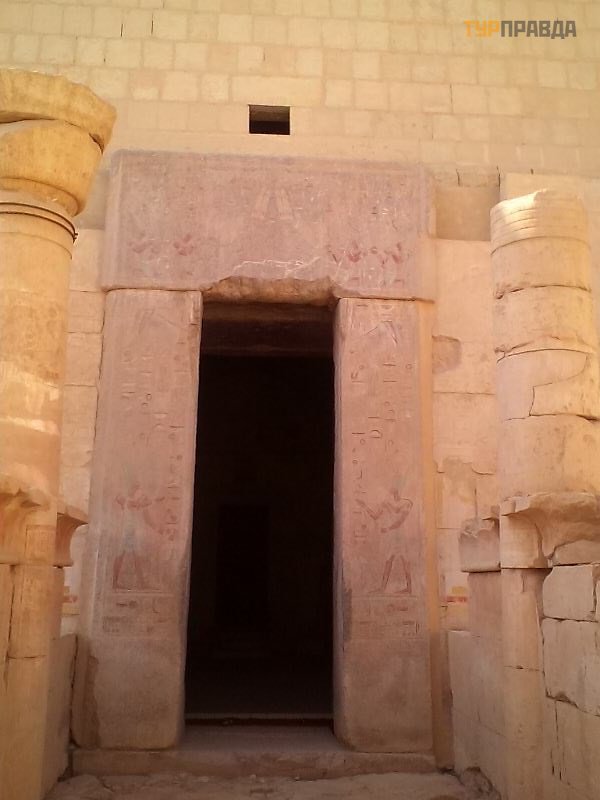 Entrance to the Temple of Queen Hatshepsut
Entrance to the Temple of Queen Hatshepsut
The temple is decorated with statues of Queen Hatshepsut, columns crowned with the heads of the goddess Hathor and numerous murals dedicated to events during the reign of Hatshepsut. From the entrance to the temple complex, an electric steam locomotive brings up. It seems not far, but it's hard to walk in such heat.
There are many merchants at the entrance to each sightseeing object, water in 0.5 liter bottles for $ 2 is especially popular. Get ready for the trips, everyone who has not yet been on such excursions: we froze 2 two-liter bottles of water and 1 liter of juice in the refrigerator. As it thawed, we drank it, and we had enough for the whole day, we didn’t have to buy more.
I won't talk about the numerous oil shops and papyrus and onyx processing factories that we visited on the way and against our will.
It is interesting that in every group of tourists there are those who want to buy something, which means that the Egyptians are not in vain trying to arrange spectacular presentations.
There is one undoubted plus in these visits for tired tourists - air conditioners work there, and chilled hibiscus is served to everyone.
At the end of the tour, we take a boat across the Nile to the opposite bank to the bus stop. The sunset is amazing,
The local kids bathe in the river, the banks of the Nile are green, cows graze. And on the opposite bank, as in contrast, there is a tourist area with beautiful hotels and green alleys.
Even small children in Egypt are in the "case": when leaving the boat, they grab women by the hands, allegedly helping them down the ladder, and immediately ask for a dollar.
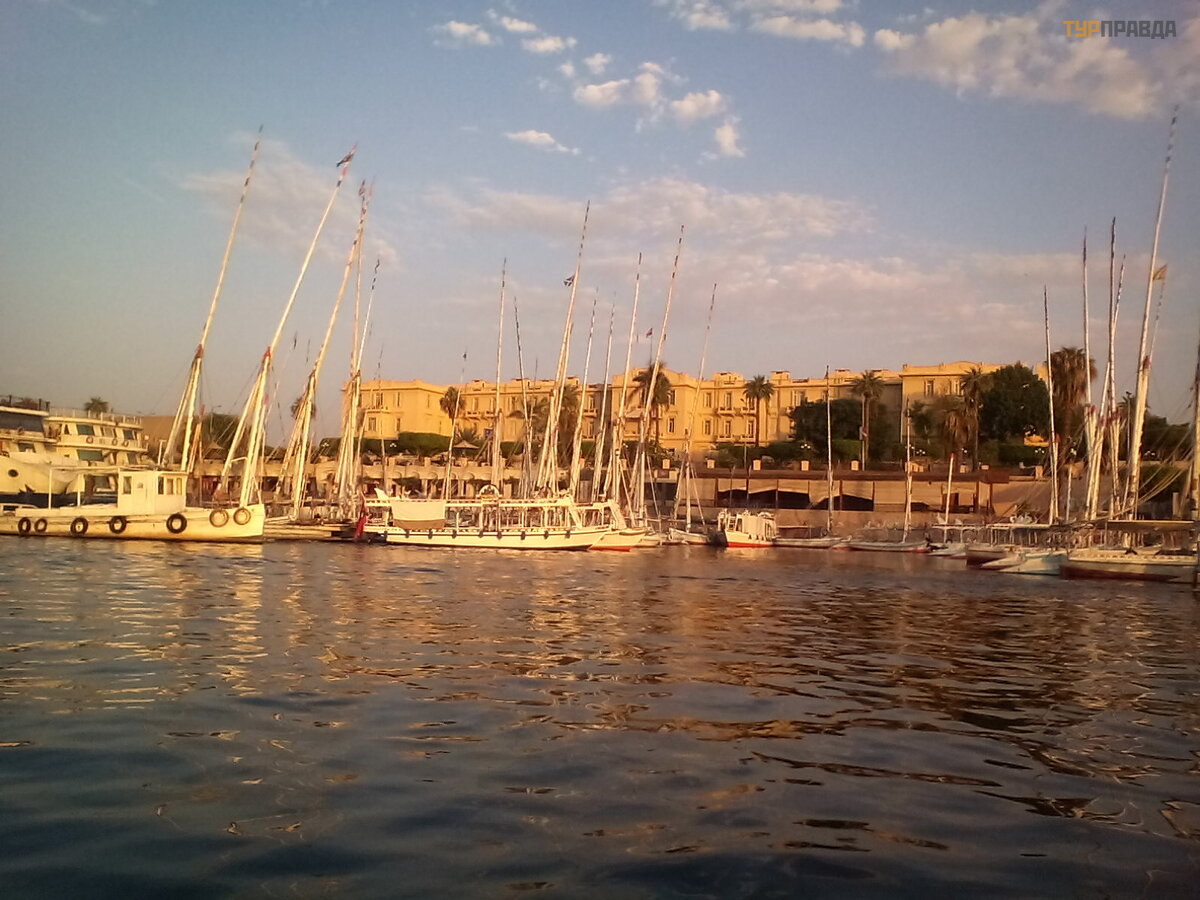 Turzon Luxor with a mooring for yachts
Turzon Luxor with a mooring for yachts
This day is over. Tiresome but very educational. By 8 pm we return to the hotel and have time for dinner. We need to digest the impressions, in 3 days we will have Cairo.
Read about our trip to Cairo in the 3rd part of our story about a trip to Egypt.
